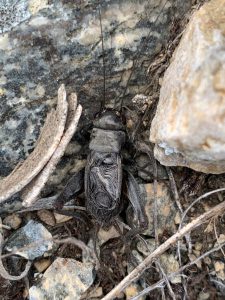BC Parks iNaturalist project
Categories:

The BC Park’s iNaturalist project is wrapping up its third year and has grown considerably since its launch in May of 2019, thanks to the help of park visitors and iNaturalist crews. The project has racked up over 470,000 observations to date, an increase of 58% from the end of summer 2020! Community scientists representing universities, neighbourhoods, and local and provincial government agencies across the province worked hard this summer, increasing the number of observed species to almost 9,000. From grizzly bears to mosses, every observation is valuable and improves our understanding of the biodiversity of British Columbia.
iNaturalist is an open source, easy to use tool for community scientists to document biodiversity and to learn about the amazing flora and fauna in their backyards and around the globe.
iNaturalist data can inform management decisions in protected areas and help track the locations of species at risk or invasive species over time. Data on species occurrences and ranges will be important for park management as protected areas are altered by climate change. Climate conditions across the province are forecasted to change and will impact species found in the provincial park system, especially those that are rare and endangered. Therefore, observations of rare and endangered species and their associated habitats are extremely important as they provide us with baseline data that can assist with monitoring changes to the ecosystems and to species ranges over time.

Since the project began, many rare and interesting species occurrences have been recorded. The Northwestern marsh fly (Helophilus neoaffinis), a large hoverfly with a bee-like appearance, was observed in Liard River Hot Springs Provincial Park in 2019, providing proof of a northern range extension of this species.
Another interesting insect discovery, the Western Rock-Loving Field cricket (Gryllus saxatilis), was documented in Canada on iNaturalist for the first time ever in 2020! This newly described cricket species with long cerci (rear appendages) was spotted in the South Okanagan Grasslands Protected Area.
This fall and winter get outside and explore BC’s provincial parks while learning about and documenting biodiversity. Check out this iNaturalist guide for some helpful tips to become an expert “iNatter”!
The BC Parks iNaturalist project was initiated by researchers from the University of Victoria and Simon Fraser University with support from the Living Lab and Licence Plate Programs and the BC Parks Foundation. The goal of the project is to increase biodiversity knowledge within the province’s parks and protected area system. Read the final report for the 2020 field season to learn more.




